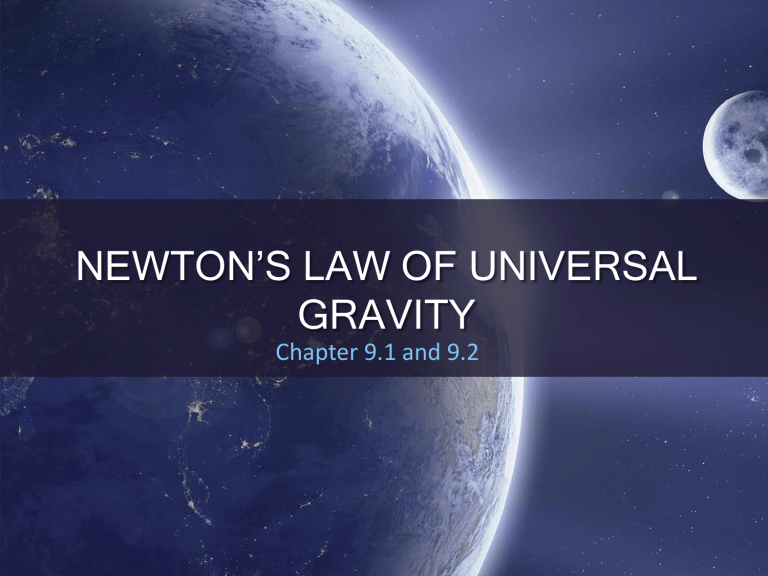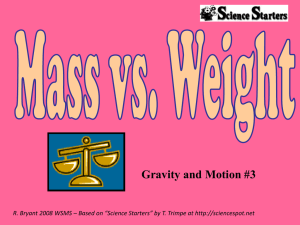universal gravitation
advertisement

NEWTON’S LAW OF UNIVERSAL GRAVITY Chapter 9.1 and 9.2 WHAT IS GRAVITY? The force of nature that attracts one mass to another mass. Anything with mass has gravity. GRAVITY IS A FORCE OF NATURE It is only ATTRACTIVE. It is directed along the line between the masses. The weakest of the forces of nature. (electromagnetic and nuclear are the others) Vector addition can be used to determine total force on an object by more than one other. It is a FIELD force – the force is there even though the objects do not touch NEWTON’S LAW OF UNIVERSAL GRAVITATION Force = 𝐺 𝑥 𝑚𝑎𝑠𝑠 1 𝑥(𝑚𝑎𝑠𝑠 2) (𝑑𝑖𝑠𝑡𝑎𝑛𝑐𝑒 𝑏𝑒𝑡𝑤𝑒𝑒𝑛 𝑡ℎ𝑒 𝑡𝑤𝑜 𝑚𝑎𝑠𝑠𝑒𝑠)2 𝑚1 𝑚2 𝐹=𝐺 2 𝑟 G = universal gravitation constant G = 6.67 x 2 𝑁∙𝑚 10-11 2 𝑘𝑔 ASSUMPTIONS All spheres can be treated as “point masses”. Distances should be measured from center to center. Weight is the force of gravity (Fw=ma) INTERPRETING THE EQUATION Since mass is in the numerator… As mass of either object increases, the force increases proportionately. Since distance is in the denominator, and is squared… As the distance between the two objects increases, the force decreases exponentially. INVERSE SQUARE LAW THE FORCE OF GRAVITY The equation can be rewritten to determine acceleration due to gravity (g) for an object on the surface of any celestial object. 𝐺𝑀 g= 2 𝑅 M = mass of celestial object R = radius of celestial object (we ignore the mass and size of the person or object on the planet)


